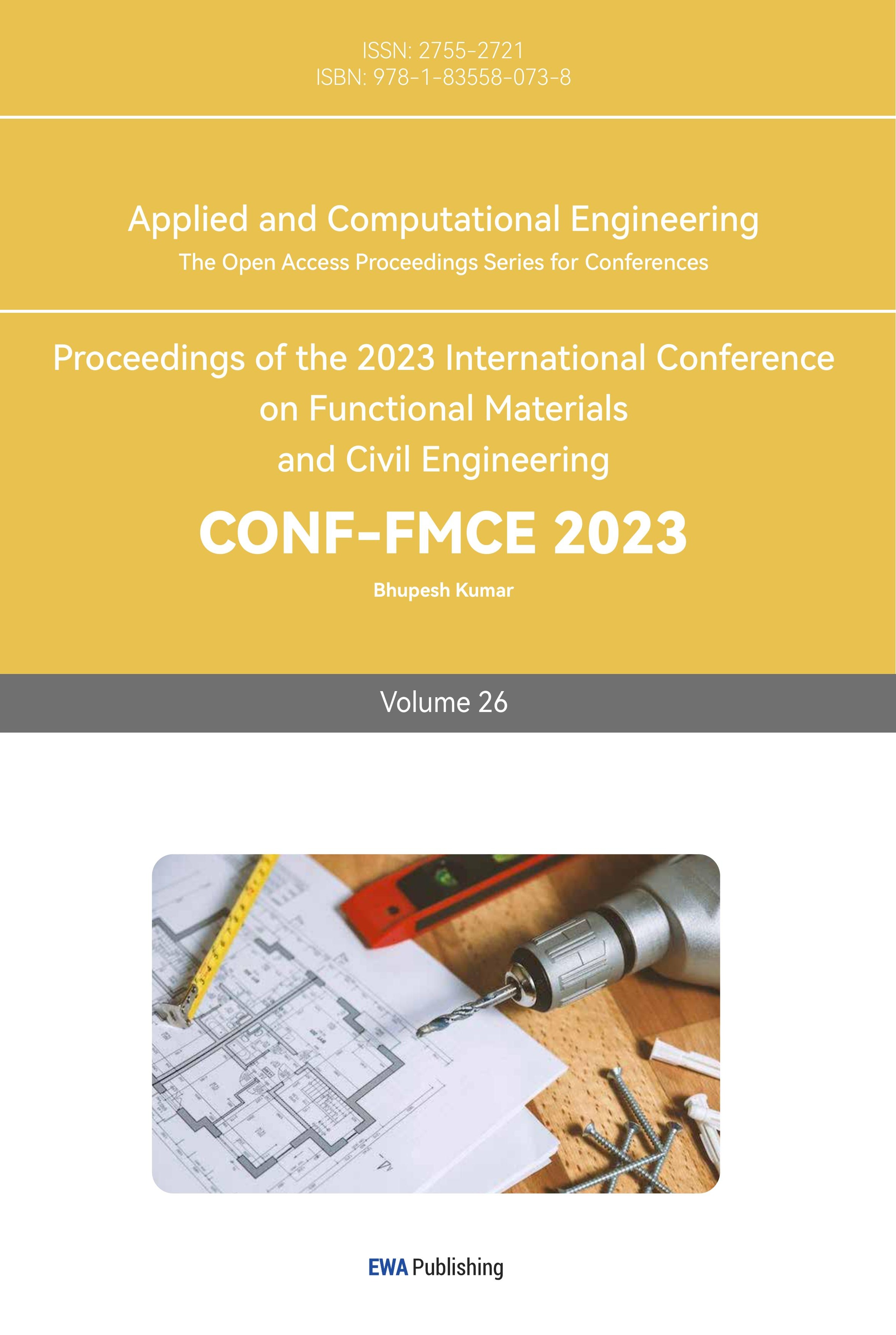References
[1]. Tarascon J M, McKinnon W R, Coowar F, et al. 1994 Journal of The Electrochemical Society, 141(6): 1421.
[2]. Gallus D R, Schmitz R, Wagner R, et al. 2014 Electrochimica Acta, 134: 393-398.
[3]. Shkrob I A, Kropf A J, Marin T W, et al. 2014 The Journal of Physical Chemistry C, 118(42): 24335-24348.
[4]. Jung R, Linsenmann F, Thomas R, et al. 2019 Journal of the electrochemical society, 166(2): A378-A389.
[5]. Wandt J, Freiberg A, Thomas R, et al. 2016 Journal of Materials Chemistry A, 4(47): 18300-18305.
[6]. Metzger M, Marino C, Sicklinger J, et al. 2015 Journal of The Electrochemical Society, 162(7): A1123.
[7]. Solchenbach S, Hong G, Freiberg A T S, et al. 2018Journal of The Electrochemical Society, 165(14): A3304-A3312.
[8]. Joshi T, Eom K S, Yushin G, et al. 2014 Journal of the electrochemical society, 161(12): A1915.
[9]. Wang C, Xing L, Vatamanu J, et al. 2019Nature communications, 10(1): 3423.
[10]. Banerjee A, Shilina Y, Ziv B, et al. 2017 Journal of the American Chemical Society, 139(5): 1738-1741.
[11]. Cui X, Sun J, Zhao D, et al. 2023 Journal of Energy Chemistry, 78: 381-392.
[12]. Zhang X, Cui Z, Manthiram A. 2022 Advanced Energy Materials, 12(14): 2103611.
[13]. Kim M, Yang Z, Trask S E, et al. 2022 ACS Applied Materials & Interfaces, 14(13): 15103-15111.
[14]. Kim M, Harvey S P, Huey Z, et al. 2023Energy Storage Materials, 55: 436-444.
[15]. Langdon J, Manthiram A. 2021Advanced Functional Materials, 31(17): 2010267.
[16]. Li W, Jie Y, Chen Y, et al. 2022Nano Research, 2022: 1-8.
[17]. Betz J, Brinkmann J P, Nölle R, et al. 2019Advanced energy materials, 9(21): 1900574.
[18]. Tan S, Kim J M, Corrao A, et al. 2023 Nature Nanotechnology, 18(3): 243-249.
Cite this article
Zhang,Z. (2023). The influence and mechanism of transition metal ions dissolution in lithium-ion batteries. Applied and Computational Engineering,26,186-192.
Data availability
The datasets used and/or analyzed during the current study will be available from the authors upon reasonable request.
Disclaimer/Publisher's Note
The statements, opinions and data contained in all publications are solely those of the individual author(s) and contributor(s) and not of EWA Publishing and/or the editor(s). EWA Publishing and/or the editor(s) disclaim responsibility for any injury to people or property resulting from any ideas, methods, instructions or products referred to in the content.
About volume
Volume title: Proceedings of the 2023 International Conference on Functional Materials and Civil Engineering
© 2024 by the author(s). Licensee EWA Publishing, Oxford, UK. This article is an open access article distributed under the terms and
conditions of the Creative Commons Attribution (CC BY) license. Authors who
publish this series agree to the following terms:
1. Authors retain copyright and grant the series right of first publication with the work simultaneously licensed under a Creative Commons
Attribution License that allows others to share the work with an acknowledgment of the work's authorship and initial publication in this
series.
2. Authors are able to enter into separate, additional contractual arrangements for the non-exclusive distribution of the series's published
version of the work (e.g., post it to an institutional repository or publish it in a book), with an acknowledgment of its initial
publication in this series.
3. Authors are permitted and encouraged to post their work online (e.g., in institutional repositories or on their website) prior to and
during the submission process, as it can lead to productive exchanges, as well as earlier and greater citation of published work (See
Open access policy for details).
References
[1]. Tarascon J M, McKinnon W R, Coowar F, et al. 1994 Journal of The Electrochemical Society, 141(6): 1421.
[2]. Gallus D R, Schmitz R, Wagner R, et al. 2014 Electrochimica Acta, 134: 393-398.
[3]. Shkrob I A, Kropf A J, Marin T W, et al. 2014 The Journal of Physical Chemistry C, 118(42): 24335-24348.
[4]. Jung R, Linsenmann F, Thomas R, et al. 2019 Journal of the electrochemical society, 166(2): A378-A389.
[5]. Wandt J, Freiberg A, Thomas R, et al. 2016 Journal of Materials Chemistry A, 4(47): 18300-18305.
[6]. Metzger M, Marino C, Sicklinger J, et al. 2015 Journal of The Electrochemical Society, 162(7): A1123.
[7]. Solchenbach S, Hong G, Freiberg A T S, et al. 2018Journal of The Electrochemical Society, 165(14): A3304-A3312.
[8]. Joshi T, Eom K S, Yushin G, et al. 2014 Journal of the electrochemical society, 161(12): A1915.
[9]. Wang C, Xing L, Vatamanu J, et al. 2019Nature communications, 10(1): 3423.
[10]. Banerjee A, Shilina Y, Ziv B, et al. 2017 Journal of the American Chemical Society, 139(5): 1738-1741.
[11]. Cui X, Sun J, Zhao D, et al. 2023 Journal of Energy Chemistry, 78: 381-392.
[12]. Zhang X, Cui Z, Manthiram A. 2022 Advanced Energy Materials, 12(14): 2103611.
[13]. Kim M, Yang Z, Trask S E, et al. 2022 ACS Applied Materials & Interfaces, 14(13): 15103-15111.
[14]. Kim M, Harvey S P, Huey Z, et al. 2023Energy Storage Materials, 55: 436-444.
[15]. Langdon J, Manthiram A. 2021Advanced Functional Materials, 31(17): 2010267.
[16]. Li W, Jie Y, Chen Y, et al. 2022Nano Research, 2022: 1-8.
[17]. Betz J, Brinkmann J P, Nölle R, et al. 2019Advanced energy materials, 9(21): 1900574.
[18]. Tan S, Kim J M, Corrao A, et al. 2023 Nature Nanotechnology, 18(3): 243-249.









